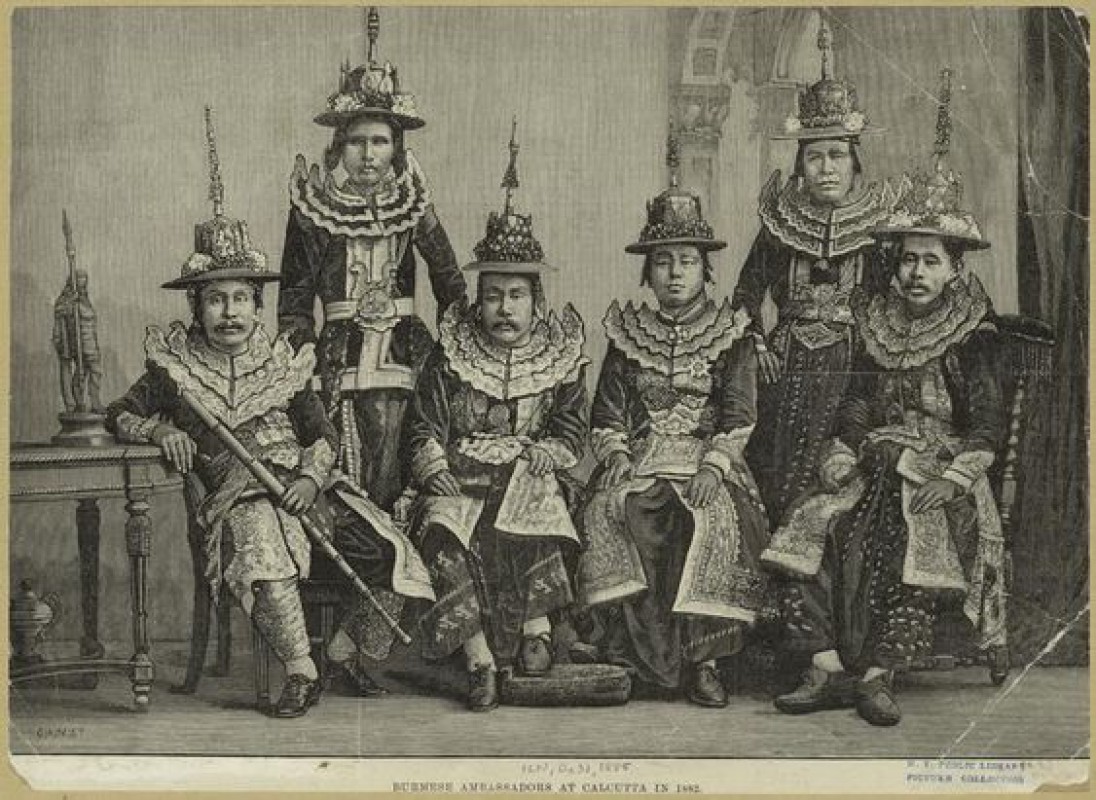Cultural symbol of ancient Myanmar’s headwear passed down through generations

799

Thiri Khit Oo (NP News) - Nov 1
Myanmar’s traditional clothing and headwear represent the nation’s rich cultural diversity and history, rooted deeply in its ancient traditions and ethnic variety. From royal courts to everyday wear, headwear in Myanmar has long been a symbol of status, cultural identity, and religious significance.
The Royal Headwear also a mark of nobility
Among the most iconic forms of Myanmar’s headwear is the Royal Headwrap, a traditional turban worn by the country’s royalty, nobles, and aristocrats in ancient times. The intricate style and luxurious materials, often silk or fine cotton, used to create these headwraps symbolized the wearer’s rank. One of the most famous designs is the gold headwear worn by kings and high-ranking officials, adorned with elaborate decorations to distinguish their status.
The royal crown, or diadem, was another form of headwear reserved for kings and queens during the Bagan and Konbaung dynasties. Crafted from gold and encrusted with precious gems, the diadem’s design was inspired by Buddhist symbolism, reflecting the divine right to rule. Kings often wore crowns with towering spires, symbolizing their elevated status and connection to the heavens.
Noble and Courtly Headdress
Nobles and court officials in ancient Myanmar wore conical headdresses made from precious metals such as gold and silver. These tall, ornate headpieces signified their rank within the royal court. The more elaborate the design, the higher the wearer’s status. The conical shape, often resembling a pagoda or spire, reflected Buddhist influences, as headwear in Myanmar frequently carried religious symbolism.
Ethnic diversity in headwear
Myanmar’s ethnic diversity is reflected in its traditional headwear, with various groups displaying their unique styles. The Shan people, for instance, are known for their simple yet colorful headscarves, worn by both men and women. These scarves are tied in a casual but distinctive manner, reflecting regional identity.
Similarly, the Kachin ethnic group has its own headwear tradition. Kachin men often wear headscarves adorned with specific patterns and colors that represent their clan or tribe. The Mon people, one of Myanmar’s oldest ethnic groups, had their own distinctive headdresses. Mon kings and nobles wore crowns and headwraps similar to those of the Bamar kings, though they often incorporated Hindu and Theravada Buddhist influences in their designs.
Religious and spiritual significance
In Myanmar’s ancient and modern history, headwear also played a significant role in religious festivals, particularly those dedicated to spirit worship. Spirit mediums, during these festivals, don ornate and colorful headdresses, reflecting the spiritual and ritualistic importance of these ceremonies. The headgear worn by mediums is often elaborate, signifying their role as intermediaries between the human and spiritual worlds.
As the blend of tradition and modernity, today, the tradition of making Myanmar headwear continues to thrive. Passed down through generations, the craftsmanship of traditional headwear remains alive and well. Many headwear styles are handmade using time-honored techniques, highlighting the country’s local artistry and material use. Supporting local artisans helps preserve the authenticity of these products and promotes the continuity of this cultural practice.
With the growth of tourism, demand for traditional Myanmar headwear has surged. Visitors are increasingly interested in wearing and purchasing these traditional items, leading to a blending of ancient practices with modern business opportunities. This growing interest is fostering a sustainable headwear industry in Myanmar, where local artisans continue to create unique, handcrafted pieces that embody the country’s cultural heritage.
A cultural treasure, Myanmar’s traditional headwear is much more than a functional item; it’s evidence to the country’s rich history, vibrant culture, and ethnic diversity. Each style, from royal crowns to simple headscarves, carries its own historical and cultural significance, serving as an enduring symbol of the identity of its wearers. As Myanmar’s headwear continues to evolve, it remains an essential part of the nation’s traditional attire, celebrating the artistry and cultural legacy that define the country.